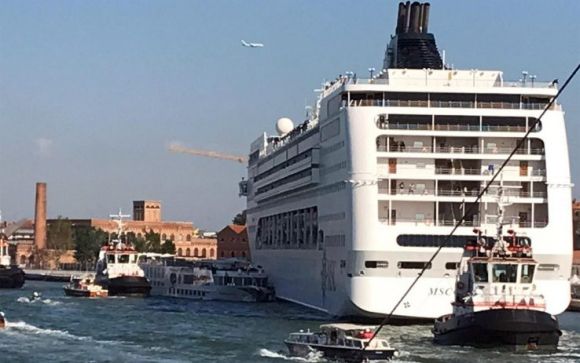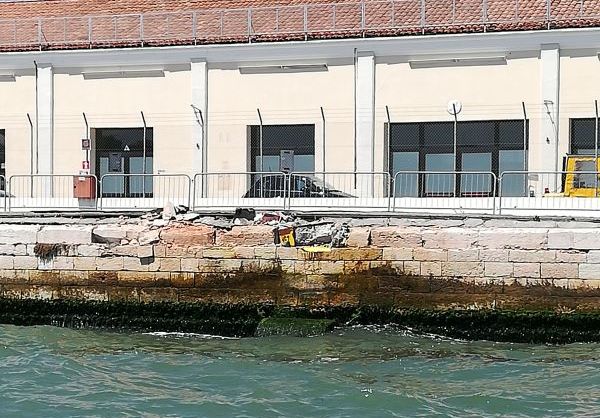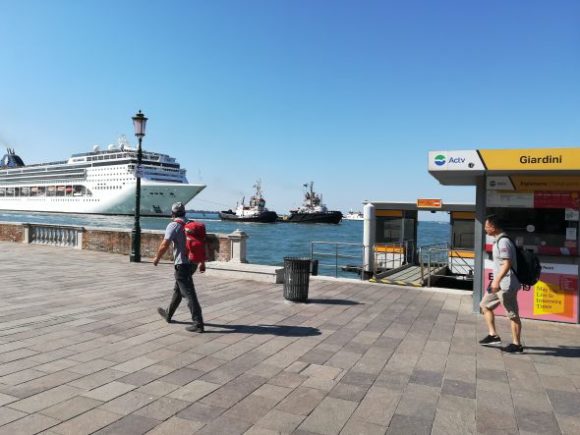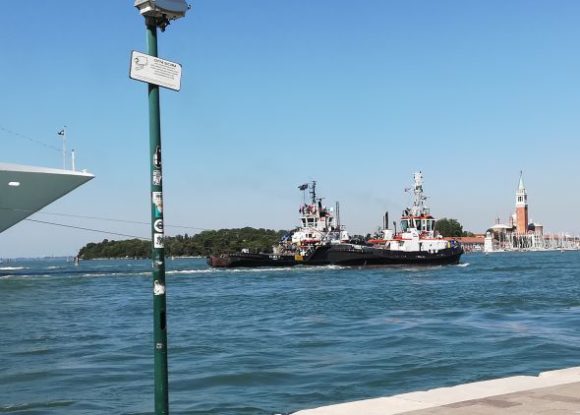
Everyone knows that 33 days ago (June 2, for the record) a cruise ship named the MSC “Opera” ran into the dock at San Basilio and delivered a glancing blow to a smaller ship moored there, and a mighty thwack to the dock itself. The video of the event created quite the sensation, though probably nothing near the sensation experienced by crew and passengers.

Many people were horrified but, as you might imagine, the “No Big Ships” contingent was ecstatic. Whatever your emotions, for those few seconds it appeared that the end of the world had come. Abundant photos and a video are to be found here.
Technicians swarmed the ship, examining every valve and screw; statements were taken, legal documents were launched, apologies and reimbursements rained down upon the passengers. The proximate cause of the incident was the breaking of the bow tugboat’s line to the ship as it struggled to slow the ship’s speed. But it seems that something was amiss with the engine; an official of a tugboat company explained to France 24 that “The engine was blocked, but with its thrust on, because the speed was increasing.”
According to Mr. James Walker, a Miami-based maritime lawyer and cruise safety advocate, “Cruise ships typically have redundant power systems; however, it is not possible for a secondary power source to immediately or instantaneously activate in time to avert an accident like this,” noting there was nothing the captain could have done to avoid the collision.
One factor that I haven’t seen mentioned anywhere amid all the technical details of the ship was the tide. Anyone who was near — or especially on – the water could confirm that there was a very powerful incoming tide that morning; obviously it would have added significantly to the ship’s forward momentum. The next ship in line to enter Venice waited for at least an hour, immobile, in front of Sant’ Elena, while the rear-facing tugboat attached to its stern kept its engines roaring at full-speed-ahead (i.e., pulling the ship backward), straining to resist the power of the current.
To return to the wayward ship: After a week or so the MSC “Opera” was back at work. I saw it go.
So things are back to normal. I can say that because I noticed other signs.
For example, last Saturday (June 29), as we were crossing the causeway to Venice, I counted nine (9) cruise ships in port. I interpret that to mean that the cruise industry has not labeled Venice a hazardous-duty post.
Also: Passing San Basilio in the vaporetto, I could see the damage to the dock. Frankly, our bathroom is in worse shape than this.

Perhaps most important, last Sunday morning around 9:00 AM I saw a majestic ship bearing the MSC emblem approaching Venice. According to the port schedule, this would have been the MSC “Magnifica,” but the “Opera” was right behind it an hour later. It was being accompanied (not literally towed, as you can always see that the ship is proceeding under its own power) by two monster tugboats in place of the previous single, more modest tug.


For those who object to the ships on aesthetic grounds — big, out of proportion, ugly passing Venice, none of which is debatable, though I think we should, as a general rule, resist correlating beauty and safety — one should keep in mind that smaller boats are often involved in similar accidents, with worse results than a banged-up fondamenta. Four days before this event, a river-cruise boat collided with a sightseeing vessel on the Danube at Budapest, leaving seven dead and 21 missing. Neither ship was big.
When a solution is reached to which all parties can agree, something will change. Meanwhile, the monster tugs are on the job.
